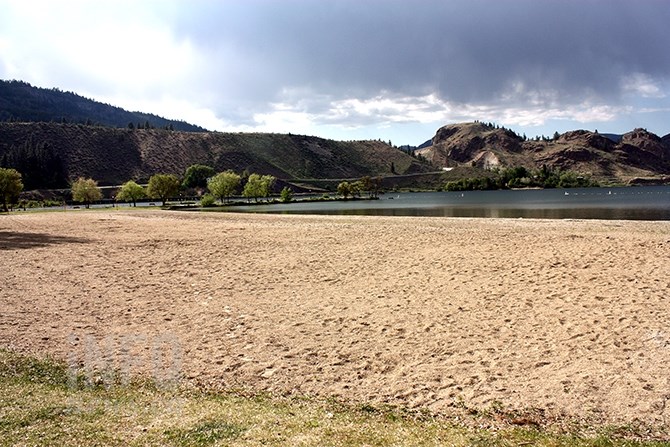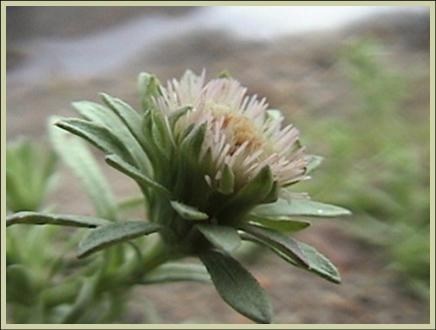
Christie Memorial Park in Okanagan Falls is home to the short-rayed alkali astor, a plant considered a species at risk.
(STEVE ARSTAD / iNFOnews.ca)
May 12, 2015 - 11:27 AM
PENTICTON - A policy regarding species at risk and restricted beach usage at an Okanagan Falls park is not getting much support from a regional district committee.
At an environment committee meeting last week regional directors said they disagreed with the restrictive policy. The committee, including Area ‘D’ Director Tom Siddon, were most upset at legislation restricting beach usage at an Okanagan Falls park. The policy also frowns on regional district plans to extend a regional trail in the Vaseux Lake area.
Environment Canada Canadian Wildlife Service Protected Areas and Stewardship Head Ken Brock spoke to the regional district about the Species at Risk Act and its application within the regional district.
He noted the short-rayed alkali aster as a critical-listed species the district was obligated to protect at Christie Beach in Okanagan Falls. Brock also expressed misgivings about regional district plans to extend the Kettle Valley Railway trail south of Okanagan Falls along a protected area on the east side of Vaseux Lake, again through habitat considered home to species at risk.
Siddon called the short-rayed alkali astor growing on Christie Beach a ‘weed.’
“Don’t ask us to be martyrs,” he said to Brock, pointing to at least seven other locations where the plants has been documented. “Don’t tell us just because it occurs there we have to protect it when there is amenity value.”
Brock noted the Christie Beach site hosts the largest and healthiest location for the species, to which Siddon replied he would get a wheelbarrow and help move them.
“We’re being told we cannot continue the KVR line across the bridge just below our sewage treatment plant,” the Okanagan Falls director said. “Instead (cyclists) have to use a winding highway with lots of accidents, especially at the big rock, breathing vapours from 18-wheelers, and that’s just dumb."
Brock said his department cannot stop the regional district from locating a trail along the west side of Vaseux Lake, only express ‘concerns.’ Brock said the regional district is home to 57 listed species at risk, second in the province only to the capital area in threatened species. He said this presents a ‘real opportunity to make a disproportionally large contribution to the recovery of species at risk in Canada, here, or a disproportionally large negative impact, if those species are not protected.’

Image Credit: sararegistry.gc.ca
Of the 57 endangered species noted made their homes in the unique desert environment of the regional district, and said the critical habitat was ‘widely distributed and mostly in the valley bottom.’
Brock said local governments had the first opportunity to provide protection of critical habitat on private or provincially held lands, noting the federal government had no legislation to prevent critical habitat destruction on those lands, except in the case of migratory birds.
He said if effective protection of critical habitat was not in place, a federal protection order would be seen as a last resort. Brock said his organization’s role is as an oversight process to assess what type of protection is in place, and make recommendations accordingly. The degree of protection depends on what the critical species need from the environment in order for it to be sustainable.
To contact the reporter for this story, email Steve Arstad at sarstad@infonews.ca or call 250-488-3065. To contact the editor, email mjones@infonews.ca or call 250-718-2724.
News from © iNFOnews, 2015